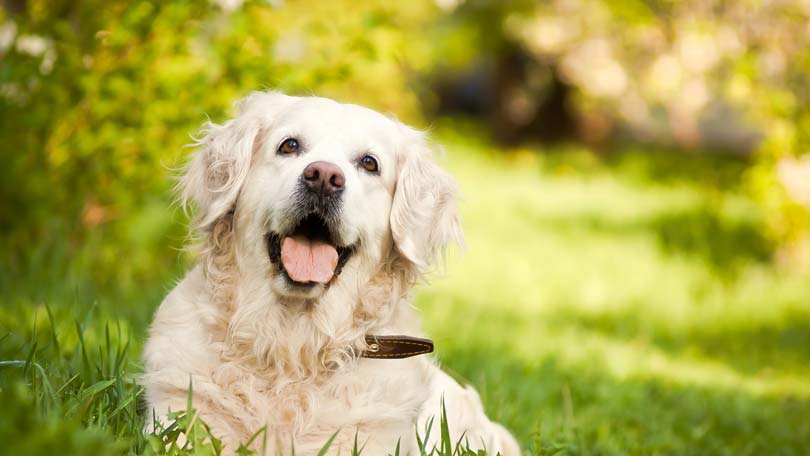
Every dog owner knows that most dogs would eat as much as they can, at any time of the day and night. But allowing one’s dog to eat ad libitum, which means “at its own pleasure”, is not good for its health and most often leads to overweight, obesity and their related complications, such as diabetes, orthopaedic problems, cardiovascular and respiratory disorders and decreased heat tolerance. In order to prevent these health issues from occurring, it is not only important to feed dogs a healthy, well-balanced diet, with the correct amount and proportion of protein, carbohydrate and fat, but it is also necessary to provide them with food in the proper portions and in the correct frequency throughout the day. So the question arises: “how often should you feed a dog?”.
Well, as a general rule, the feeding frequency for dogs mostly depends on their age and should be progressively decreased from birth to adulthood, with the relevant exception of bitches in the latter stages of gestation and throughout the lactation period, which require a substantial change in the amount and frequency of food fed.
How Often You Feed Depends on the Age of the Dog
The growth phase is a critical time in the life of a puppy, and errors in the feeding amount or frequency during this phase may lead to slow or decreased growth, as well as to other developmental health problems. During the first 4 weeks of life, puppies should be fed with the milk of their own mother or, when lacking, with the milk of a foster mother. However, when natural bitch’s milk is not available, puppies can be hand-fed using commercially available artificial bitch’s milk, that can be administered by mouth through a syringe (without needle of course!) or a nipple bottle. The total daily dose of artificial milk should be progressively increased over a period of 4 weeks from about 15 mL to about 20 mL per 100 g of body weight, and should be divided into 5-6 equal portions given at regular intervals through the day.
The transition from a milk-based diet to solid foods is a gradual process known as weaning. It usually begins at 3 or 4 weeks of age, depending on the dog’s breed, and should be completed by about 7 to 8 weeks. During this transition period, puppies are initially fed with puppy solid food diluted with enough artificial milk or water to achieve a liquid consistency. The amount of added milk or water should then be gradually reduced and finally omitted over a period of approximately 4 weeks, until the puppy is completely able to eat solid food and drink water on its own. During this period the amount of food fed at each meal should be gradually increased while, in the meantime, the feeding frequency should be progressively reduced from 5-6 to 3-4 times daily.
After weaning has been completed, puppies should be fed 3 to 4 times a day using highly digestible, nutrient-rich food, specifically formulated for growing dogs. This feeding schedule should be continued until puppies are 4 to 6 months old (9 months old for giant breeds), and then gradually substituted with a regular twice-a-day schedule with proper dog maintenance food. This feeding frequency is the one recommended for young-adult, adult and even old healthy dogs.
A separate mention must be made of pregnant and lactating bitches, because of their particular energy and nutrient requirements. During the first 6 weeks of pregnancy, the energy requirements of bitches do not change significantly, so that the feeding schedule used for normal adult maintenance (two meals a day at regular times) properly meets their needs. However, during the latter stages of gestation (that is from the sixth month of gestation until the time of delivery) the energy requirements of bitches begin to increase due to the rapid growth of fetuses. This energy requirement increase is even more significant during lactation and reaches its peak at approximately three weeks after delivery, when energy and food intake can be three to four times above maintenance. It is clear that, in this situation, the daily total amount of food required to meet the bitch’s requirements needs to be divided into several small meals (at least three meals a day), in order not to overload the digestive capacity. As an alternative, food can be also be given free choice (ad libitum), but paying attention that the bitch does not gain too much weight, especially during gestation. In this regard, it may be helpful to remember that the weight of the bitch at the end of the gestation period should not exceed 125% of the maintenance weight.
Up until now we have answered the question “how often should you feed a dog?” focusing on the needs of healthy dogs. But what about dogs with health issues? Well, generally speaking, the nutritional management of many dog diseases involves specific changes in the formulation and composition of the diet, rather than changes in the frequency of feeding. Therefore a twice-a-day feeding schedule can be considered a good, if not the best option for almost all adult dog patients. Relevant exceptions are dogs with gastrointestinal disorders or diabetes and dogs that have to be put on low-calorie diets in order to treat or control obesity or overweight. In these cases, dividing the daily amount of food into several small meals (at least three meals a day) can be an important part of the nutritional management of the disease. In fact, feeding frequent small meals helps prevent the corrosive action of gastric acid on the lining of the empty stomach or gut in dogs with gastritis, reduces the intestinal overload in dogs with diarrhea or malabsorption disorders, is effective in preventing wide blood glucose fluctuations in dogs with diabetes and finally is an effective way to control hunger in obese and overweight dogs.
From what has been said above, it is therefore clear that a really unique answer to the question “how often should you feed a dog?” cannot be given. It all depends on the age, physiological condition and pathological state of each dog.





